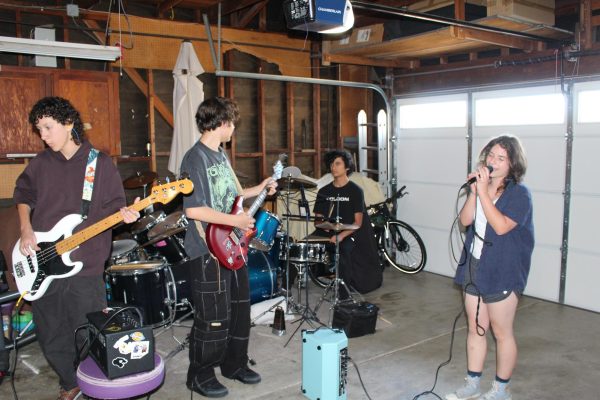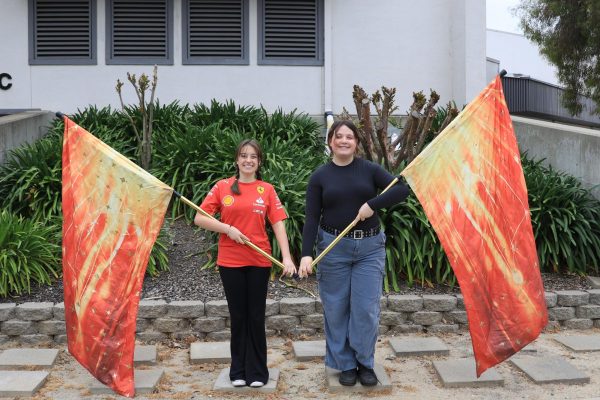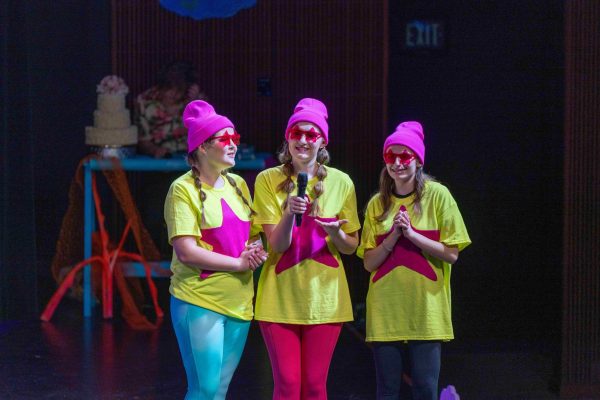Cal’s winter guard team wins first circuit championship
Members of the Cal High winter guard team can call themselves champions.
Competing in the California Color Guard Circuit for the first time, the team won the championship on March 29 at Independence High School in San Jose.
There were 11 teams competing for the title.
“When we won I felt ecstatic and extremely proud of how far we’ve come,” said junior Maya White. “The fact that we were able to get first in a circuit that we’ve never competed in before with so many new members, who have never spun before, was amazing.”
The winter guard team has been bringing beautiful and intense routines to the field with the use of flags, rifles and sabers.
Winter guard is an indoor activity, deriving from military ceremonies and veteran’s organization ceremonies.
Whereas color guard is an addition to the marching band and performs with the band during halftime shows, winter guard performs to music with all the same equipment as color guard.
However, the groups consist of various sizes.
“I fell in love with it, even though I wasn’t the best,” said junior Christina Richardson. “I made a lot of new friends in it and I felt like I belonged somewhere in the school.”
Unlike most schools, Cal’s winter guard team doesn’t have tryouts.
Last season, the team had only eight members because of a lack of interest, but this year the team grew to 15.
Instead of tryouts for next year’s team, winter guard will have several clinics now that the season has ended.
These clinics teach the basics of flag movement and leave it up to the attendees to decide whether to join the team.
Most people that go to the clinic have never touched a flag and are introduced by friends that have an interest.
“[The first time I tried out] I was utterly amazed and terrified of its sheer beauty and complexity [of the flag movements],” said junior Alexis Viengmyxay. “This whole idea of using an object, treating it as if it was just an extension of your body, and incorporating into a dance routine, it overwhelmed me.”
Coached by Kyle Miers, Yifan Gong, and Chloe Mendoza, the team earned second place in their two March competitions before winning the championship.
Winter guard practices two days during the week from 4-8 p.m., and again on Saturday.
The team starts practice by stretching and warming up with dance.
Depending on the day, they may do a number of abdomen workouts and push-ups.
After running through the dance feature in the show and flag warm-ups, the team splits into three sections (saber, rifle, and flag) or get into a flag block.
A flag block consists of running warm-ups with flags.
Next they move onto “spin offs” or “toss offs.”
This is when the team does whatever its told until they can’t do it any longer or they get out of tempo.
The kind of exercises the winter guard team does depends on the coach for that day. They also change if any changes are necessary in order to maintain the high standards for their programs.
“I’ve had to give up a lot of time for winter guard,” said White. “It’s fun but you have to be really dedicated to wanting to be there.”
Added White, “Homework, grades, and other things like that get a bit harder to keep up with but time management and the work ethic winter guard teaches you definitely comes in handy.”
Winter guard is scored in four different categories by five judges. Each judge must have a strong sense of ethics, an understanding of the activity, well-developed communication skills, an open mind, and the ability to function within a team.
In competitions, winter guard teams are judged on talent, precision, creativity, and horizontal orchestration (how all the elements create the larger picture/effect). Performances incorporate equipment, props, and dance moves to give meaning to the music behind their performances.
Unlike color guard, winter guard is judged on their own merits without band input.
Now entering its 37th year, the sport continues to evolve and grow worldwide.



